共享经济类论文参考文献PPT模板
- 格式:pptx
- 大小:23.40 MB
- 文档页数:25

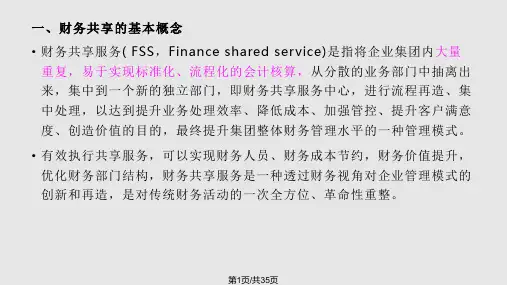


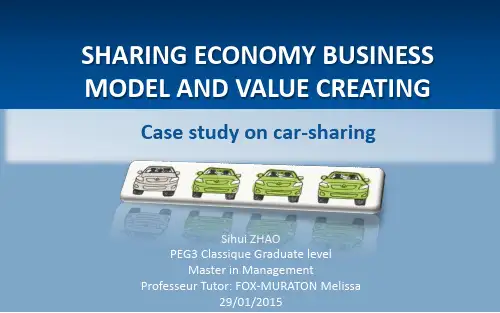
SHARING ECONOMY BUSINESS MODEL AND VALUE CREATING Case study on car-sharingSihui ZHAOPEG3 Classique Graduate levelMaster in ManagementProfesseur Tutor: FOX-MURATON Melissa29/01/2015TABLE OF CONTENT⏹ Research Context⏹ Research Objective⏹ Methodology⏹ Structure of thesis⏹ Findings⏹ ConclusionPeer-to-Peer EconomyRESEARCHCONTEXTcollaborative consumptionRelationship economyAccess EconomySharing EconomyWHAT?Economic model based on “Access to” rather than “Ownership of” physical and human assets like time, space and skills.They make use of idle assets and create new marketplaces.Sharing EconomyIn other word, it involves using online platform and internet technology as tools to connect distributed groups of people to match millions of haves with millions of needs, immediately and efficiently.MODEAIMWHERE?Sharing EconomyWHY?Peer to peer payment systems Reduced transaction costs Peer to peer social networking Innovative mobile technologiesDRIVERS OF SHARING ECONOMYIncreasing Population Density Need for more Resources Desire for community Consumerist Culture7 times more devices than people by 2020Monetize Excess or Idle InventoryIncrease Financial Flexibility Access Over Ownership Influx of VC Funding$ 2.46 billion funding inSharing economy startups in the last 7 MONTHSWorld population will be 9.3BILLION by 2050DRIVERS: T. E. S.Opportunities in Car Sharing 2020: Carsharing to emerge as additional business opportunity for automotive manufacturer for customer retention and long term sustainabilityGlobal Carsharing Outlook, Number of Members and Vehicles, 2006-2014(Source: Frost and Sullivan)Carsharing Market:Carsharing Vehicles and Members Growth, Global, 2010–2020① MemberCarsharing subscriber base to be 14 Million in EU by 2020200,000 shared vehicles expected in Europe by 2020France, United Kingdom, Germany and Switzerlandto hold around 75% of revenue share in 2016By 2016, 1 in 5 vehicles of the carsharing vehicle fleet is expected to be a battery powered EVThe revenue potential of carsharing market is expected to be €7 Billion by 2020 in EuropeVehiclePotential MarketUsage of Electric VehicleRevenue Generation⑤② ③ ④WHO?Communication technology supportCommunicationtechnology supportCUSTOMERCUSTOMER PARTICIPANTsprovides a new way of thinking about business, exchange, value and community. Enabled by internettechnologiesConnecting distributednetworks of peopleand/or assets(Mine,yours, ours)Making use of the idling capacity oftangible and intangible assetsEncouragingmeaningfulinteractions and trustEmbracing openness,inclusivity and thecommonsThe sharing economy CharacteristicsRESEARCH OBJECTS This study conducted exploratory and descriptive research on the innovation business model of Car-sharing to gain an well understanding of how such emerging consumption business model are shaped and how value creation it producesTo develop an understanding of the different between Traditional car consumption and Car-sharing consumptionmodel.To identify Car-Sharing Value Creation by NICEframeworks;To recognize the appropriate methods when applies Car-sharing value; from business, operation and customer strategyviews;Specific objectives of the study contain :M E T H O D O L O G YIntegrated Theory: Business Model Design; Value creation;Data collection; Data reduction; Data analysis;Theory StudyResearch ObjectiveEmpirical DataPrimarily problemGenerative modelBusiness model:key choices, components, ecosystem, environment, innovation elementsValue creation: Value chain,Value framework•Actors•Relationship •Mechanisms •Environment •ChallengeFind the way to answer research questions posed by the research: •What are the activities, entities, processes, and forces and the contexts that influenced, enabled, or constrained car-sharing?•What are the opportunities for the new comers to car-sharing? What the strategic options for the companies? What the market situation and thecontext of the car-sharing business?•What’s the core value of car-sharing and what the value creation model based on the car-sharing business? Who are the key players and components incarsharing business?•How to operate with outstanding execution underlying good idea? What are the correspondent strategies to figure out the challenges?S T R U C T U R E O F T H E S I SThe theory research of sharing economy development and theapplication of sharing economy business modelValue net model ofsharing economy business modelTheory studyModel frameworkBusiness modelCase studyFinding &ConclusionHow does sharing economy business model succeed in performing value creating and implementing in car-sharing business?Study ObjectiveSharing economyValue netCase studyValue creationBusiness modelstrategyValue model of car-sharing businessContextAnalysis of findings; conclusion and suggestionQuestionFINDINGFINDINGSThe car-sharing business model innovation is based on the role transformation of customers.CUSTOMERMARKETPROCESS OTHERPARTICIPANTSPRODUCT OR SERVICESOCIAL ENVIRONMENTService innovation;Potential bargain space;Collaborative consumption;Characteristics;access over ownershipBased on the internet and network terminal;No boarder of the transaction time and place;Customer driverAccurate market segmentation Car-sharing;ride-sharing; mobility-sharing;redistribution; Long life timeTransaction activity between individuals;Needs and haves self-match systemTransaction online platform;social networking services;credit supervisoryorganization; partnership;terminal manufacturerSustainable consumption;Sharing spiritCUSTOMERMARKETPROCESS OTHERPARTICIPANTSPRODUCTOR SERVICESOCIALENVIRONMENTMARKETPLACEPRODUTSSERVICEProvide a platform Company as a serviceMotivate a marketplace Sharing economyCustomer-Oriented0 0.511.522.533.544.5O f f e r i n g L e v e lCompeting Factors Traditional transportation Traditional car renting Car/Ride-sharing•Novelty- adopt innovative content, structure or governance•Lock-In – build in elements to retain business model stakeholders•Complementarities – bundle activities to generate more value•Efficiency– reorganize activities to reduce transaction costsCustomer is the core value source of the sharing economy business and it is the motivator and revolutionary of the newconsumption model.First, customer has more initiatives and each one could be the potential provider and user. Customer owns value, deliver value,create value andmaintain value.Second, Most of thecar-sharing companiesbegin to act as amediator or aplatform to match theneeds and haves.Third, the ecosystemof the car-sharingbusiness has thenature of trustestablishing.C O N CL USI ONTraditional company managers and star-ups directors, who want to share a cake in thesharing economy market, will benefit from the studyThe study’s focus on sharing economy development highlights the new consumption mode and motivates the sustainable economic seeking in the future. The sharing economy seeks to dig out the new consumption model by unlocking the value of idle and redistribution the social resources more sustainably.T H A N K S。

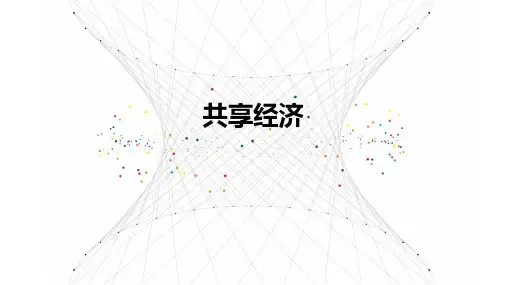
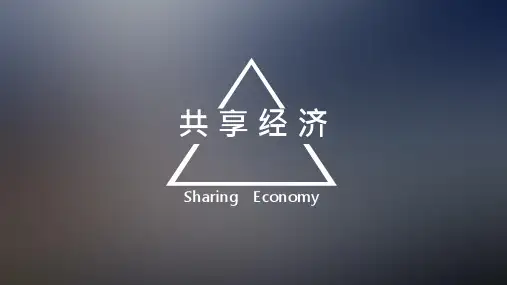
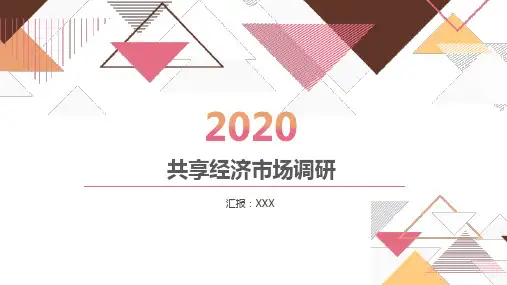


关于共享经济发展现状的研究文献综述作者:刘宗沅来源:《时代金融》2017年第32期【摘要】随着互联网时代的来临,信息技术不断加强,“共享经济”作为一种新型的经济模式越来越受到人们的关注和追捧。
本文将对于国内外“共享经济”理论的提出与研究发展作以总结论述,借助CiteSpace软件以及统计方法对于国内学者所做的“共享经济”发展研究现状进行判断,从而对其发展过程中的主要议题进行详细探讨,帮助国内研究者了解现阶段“共享经济”理论研究及商业模式发展现状,以便完善研究思路、解决现存问题,以便进一步深入研究。
同时也为在此领域拓展业务的实践者,特别是对即将进入该领域开拓新天地的创业者们提供更多具有参考价值的新思路。
【关键词】共享经济文献综述分享经济互联网一、选题背景提倡共享发展理念,是不折不扣实现十三五规划目标的重大举措。
十三届五中全会的会议公报指出,“要坚持共享发展,发展成果由人民共享,使全体人民在共建共享发展中有更多获得感。
”李克强2015年提出“互联网+”行动计划,其中,共享经济便是当前被广泛关注并引起热议的“互联网+”的形式。
在“大众创业,万众创新”的时代背景下,共享经济作为新兴经济模式渗透于社会发展的方方面面。
共享经济也称作分享经济,2008年率先在美国兴起,主要形式为分享个人闲置物品及资源,有具体到房屋、车辆等,也有较为抽象如个人时间、技能等。
虽然其发展时间不长,但发展速度却很快。
据统计,2014年共享经济市场规模达到150亿美元,普华永道预测2025年市场规模可达3350亿美元[1]。
中国“共享经济”的起步虽比起国外来说更加晚一些,但发展成果同样令人瞩目。
《中国分享经济发展报告2016》指出,2015年中国分享经济市场规模约为19560亿元,到2020年分享经济规模占GDP比重将达到10%以上。
[2]对于这么一个有着强大影响力的新经济模式,我们如何更好地理解其内涵,合理控制其对于经济社会发展所带来的影响则显得尤为重要。